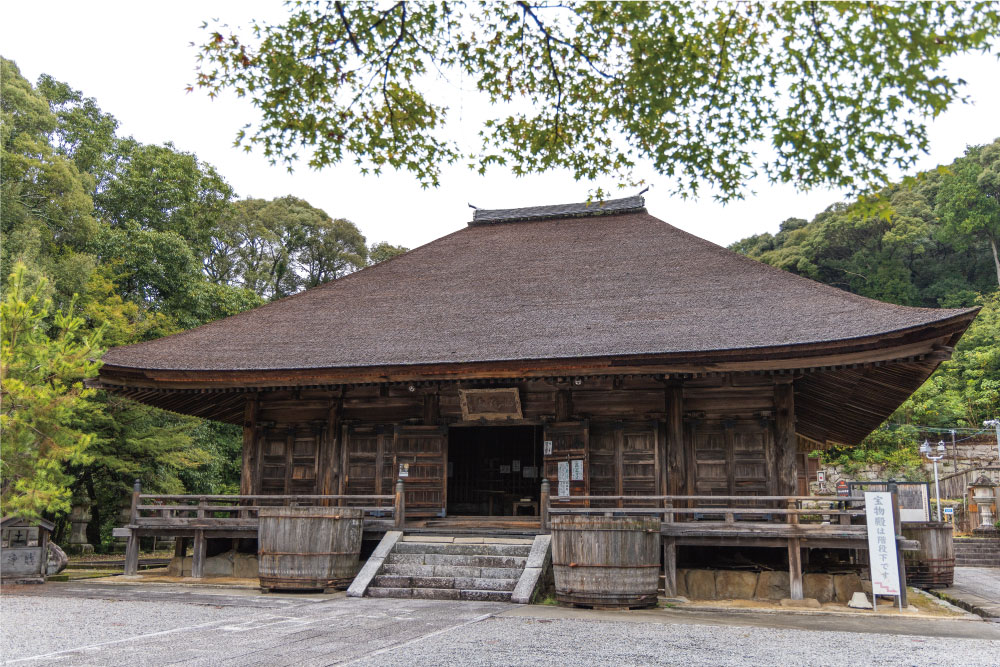Takisan-Ji Temple Main Hall (Nationally Designated Important Cultural Property)

According to the book Takisan-ji Engi, in the Takisan-ji collection, Takisan-ji is a Tendai sect temple founded by En no Ozuno (En no Gyoja), who is said to have enshrined an image of the Yakushi Nyorai, obtained from a waterfall basin. En no Ozuno is said to have been the founder of Shugendo a sect of mountain asceticism, in which people underwent rigorous mountain ascetic training.
The temple is said to have been founded as Kichijo-ji Temple, with Yakushi Nyorai as its principal deity, and was later renamed Takisan-ji Temple. Takisan-ji Temple was not established as a fully-fledged temple until the mid-12th century, when it developed with the support of the Mononobe clan, the hereditary chief priests of Atsuta, the Kamakura Shogunate, the Ashikaga clan, and the Tokugawa Shogunate among other powerful people of the time. Takisan-ji Temple was located in the mountains of Mikawa (part of present-day Aichi Prefecture), along a route branching off from the important Tokaido Highway’s Yahagi Higashi-shuku post town, towards Asuke (Toyota City, Aichi Prefecture) and to Shinshu (parts of present-day Nagano and Gifu Prefectures). This was a major transit point for people, goods, and culture. Takisan-ji Temple reached its peak as a garan (a place of purity where monks gathered and practiced asceticism) in the latter half of the 13th century.
The main hall of Takisan-ji Temple is a Japanese-style structure with Goken Shimen style architecture, being a five-pillared hall of five rooms across the front by four-pillars (four rooms) deep. During the Fire Festival in the final stages of the Takisan-ji Oni Matsuri, held around the traditional Lunar New Year (late January to late February), the intense heat of the large torches carried by three demons and people running through the gejin outer sanctuary where general visitors worship, and the kairo corridors surrounding the temple, scorches the main hall. The building is said to have been constructed during the Kamakura period (1185-1333), but stylistically it is thought to have been built in the early the early Muromachi period (1333-1392).
Okazaki Castle Outer Moat Enclosure >


